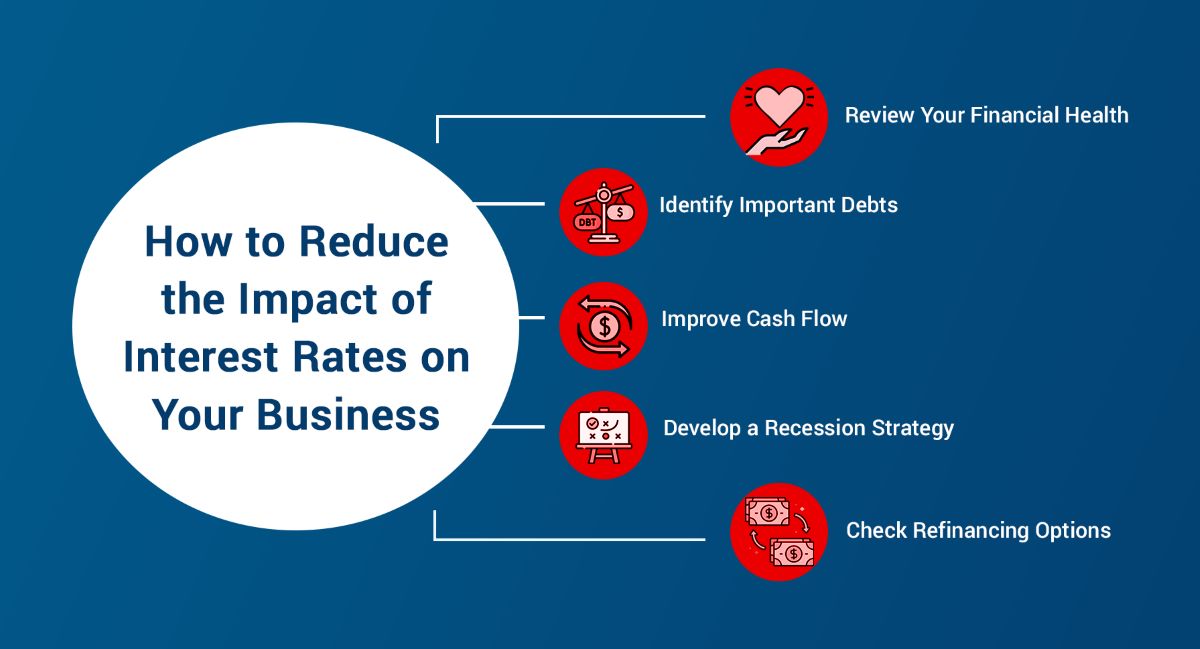

Finance
Which Interest Rates Affect Pension Funds?
Published: January 23, 2024
Discover how different interest rates impact pension funds and learn about the financial implications. Explore the connection between finance and pension fund management.
(Many of the links in this article redirect to a specific reviewed product. Your purchase of these products through affiliate links helps to generate commission for LiveWell, at no extra cost. Learn more)
Table of Contents
Introduction
Pension funds play a crucial role in ensuring financial security for individuals during their retirement years. These funds are designed to grow over time through strategic investment of contributions, ultimately providing a source of income once the individual retires. The performance of pension funds is influenced by various factors, and one of the most significant factors is interest rates.
Interest rates have a profound impact on the financial markets, and their influence extends to pension funds as well. Understanding the relationship between interest rates and pension funds is essential for both fund managers and contributors. In this article, we will explore the intricate connection between interest rates and pension funds, delving into the types of interest rates that affect these funds, their impact on fund performance, and strategies for managing interest rate risk.
As we navigate through this discussion, it will become evident that interest rates are not only a barometer of economic health but also a critical determinant of the financial well-being of pension funds. By gaining insights into the dynamics of interest rates within the context of pension funds, readers will be equipped with valuable knowledge to make informed decisions regarding retirement planning and fund management. Let's embark on this enlightening journey to unravel the multifaceted relationship between interest rates and pension funds.
The Role of Interest Rates in Pension Funds
Interest rates serve as a linchpin in the functioning of pension funds, exerting a pervasive influence on various facets of these investment vehicles. The primary role of interest rates in pension funds is to determine the present value of future cash flows, thereby shaping the fund’s overall financial health and sustainability. As interest rates fluctuate, they directly impact the valuation of pension fund assets and liabilities, profoundly influencing the fund’s performance and long-term viability.
When interest rates rise, the present value of future pension fund liabilities decreases. This is due to the fact that higher interest rates lead to lower discount rates, resulting in reduced liability valuation. On the other hand, declining interest rates elevate the present value of future liabilities, posing challenges for pension funds in meeting their obligations. Consequently, fund managers must astutely navigate interest rate movements to mitigate potential funding gaps and ensure the fund’s ability to fulfill its commitments to retirees.
Moreover, interest rates play a pivotal role in shaping the investment landscape for pension funds. Fluctuations in interest rates can impact the performance of fixed-income securities, which often constitute a substantial portion of pension fund portfolios. As interest rates rise, the value of existing fixed-income securities may decline, presenting a challenge for fund managers. Conversely, falling interest rates can lead to capital appreciation of these securities, bolstering the fund’s overall returns.
Furthermore, interest rates influence the cost of annuities, which are often utilized by pension funds to provide retirees with a steady stream of income. Changes in interest rates directly impact the pricing and affordability of annuities, thereby shaping the fund’s ability to effectively manage retirement payouts.
Understanding the pivotal role of interest rates in pension funds is instrumental in formulating effective investment strategies and risk management protocols. By comprehending the intricate interplay between interest rates and pension fund dynamics, stakeholders can proactively position their funds to navigate the complexities of the financial landscape, ultimately safeguarding the financial well-being of retirees.
Types of Interest Rates Affecting Pension Funds
Interest rates affecting pension funds can be categorized into several distinct types, each wielding a unique influence on the fund’s performance and financial outlook. These interest rates encompass both short-term and long-term rates, each of which plays a pivotal role in shaping the dynamics of pension fund management.
Short-Term Interest Rates: Short-term interest rates, such as the federal funds rate set by central banks, have a direct impact on the cost of borrowing and lending in the financial markets. These rates influence the returns on short-term fixed-income securities, which form a crucial component of pension fund investment portfolios. Fluctuations in short-term interest rates can swiftly alter the yield on these securities, thereby impacting the fund’s income generation and overall investment returns.
Long-Term Interest Rates: Long-term interest rates, exemplified by yields on government bonds and corporate bonds, significantly influence the valuation of pension fund liabilities. These rates serve as a benchmark for discounting future pension obligations, thereby shaping the present value of the fund’s liabilities. As such, movements in long-term interest rates can substantially impact the funding status of pension funds, influencing their ability to meet future payment obligations to retirees.
Inflation-Linked Interest Rates: Inflation-linked interest rates, commonly represented by Treasury Inflation-Protected Securities (TIPS) yields, are instrumental in safeguarding pension funds against the erosive effects of inflation. By incorporating inflation-protected securities into their portfolios, pension funds can mitigate the risk of declining real returns in an inflationary environment, thereby preserving the purchasing power of fund assets over the long term.
Market-Based Interest Rates: Market-based interest rates, such as the London Interbank Offered Rate (LIBOR), serve as a key reference point for various financial instruments, including adjustable-rate mortgages and interest rate swaps. These rates can influence the performance of pension fund investments linked to LIBOR or other market-based benchmarks, impacting the fund’s income streams and overall portfolio returns.
By comprehensively understanding the diverse types of interest rates affecting pension funds, fund managers and stakeholders can adeptly navigate the complexities of the financial landscape, devising robust investment strategies and risk management protocols to safeguard the fund’s long-term sustainability and the financial well-being of retirees.
Impact of Interest Rates on Pension Fund Performance
Interest rates exert a profound impact on the performance of pension funds, influencing various facets of fund management and financial outcomes. These impacts are multifaceted, encompassing asset valuation, liability management, and overall investment returns, thereby shaping the fund’s ability to fulfill its long-term obligations to retirees.
Asset Valuation: Fluctuations in interest rates directly influence the valuation of pension fund assets, particularly fixed-income securities. When interest rates rise, the value of existing fixed-income investments may decline, impacting the fund’s asset base. Conversely, falling interest rates can lead to capital appreciation of these securities, bolstering the fund’s overall asset valuation and investment returns.
Liability Management: Interest rates play a pivotal role in shaping the present value of pension fund liabilities. As interest rates fluctuate, the discount rates used to assess the present value of future pension obligations change, directly impacting the fund’s liability valuation. Rising interest rates tend to decrease the present value of future liabilities, while declining rates elevate this valuation, thereby influencing the fund’s funding status and long-term financial health.
Investment Returns: The performance of fixed-income securities within pension fund portfolios is intricately linked to interest rate movements. As interest rates rise, the returns on existing fixed-income investments may diminish, posing challenges for fund managers in generating income from these assets. Conversely, falling interest rates can lead to capital appreciation of fixed-income securities, potentially enhancing the fund’s overall investment returns.
Furthermore, interest rates can impact the cost of annuities, which are often utilized by pension funds to provide retirees with a steady income stream. Changes in interest rates directly influence the pricing and affordability of annuities, thereby shaping the fund’s ability to effectively manage retirement payouts.
By comprehending the far-reaching impact of interest rates on pension fund performance, stakeholders can proactively devise sound investment strategies and risk management protocols to navigate interest rate fluctuations, ultimately safeguarding the fund’s financial sustainability and the retirement security of beneficiaries.
Strategies for Managing Interest Rate Risk in Pension Funds
Managing interest rate risk is a critical imperative for pension funds, given the profound impact of interest rate fluctuations on fund performance and financial sustainability. By implementing robust strategies to mitigate interest rate risk, pension fund managers can safeguard the fund’s long-term viability and enhance their ability to meet future payment obligations to retirees.
Duration Matching: Duration matching involves aligning the duration of pension fund assets with the duration of fund liabilities. By matching the cash flow profiles of assets and liabilities, fund managers can mitigate the impact of interest rate movements on the fund’s overall financial health. This strategy aims to minimize the risk of asset-liability mismatch, thereby enhancing the fund’s resilience to interest rate fluctuations.
Liability-Driven Investment (LDI): LDI strategies focus on structuring pension fund investments to precisely match the fund’s liability profile. This approach involves allocating assets in a manner that hedges against changes in interest rates, thereby safeguarding the fund’s ability to meet its future payment obligations. LDI strategies often entail a strategic allocation to fixed-income securities and inflation-linked assets, aiming to protect the fund from adverse interest rate movements.
Utilizing Interest Rate Derivatives: Pension funds can employ interest rate derivatives, such as interest rate swaps and options, to hedge against interest rate risk. These financial instruments enable fund managers to mitigate the impact of interest rate fluctuations on the fund’s investment returns and liability valuation, thereby enhancing the fund’s overall risk management framework.
Dynamic Asset Allocation: Dynamic asset allocation involves actively adjusting the fund’s investment mix in response to changes in interest rates and market conditions. By dynamically rebalancing the portfolio based on interest rate expectations, fund managers can optimize the fund’s risk-return profile, thereby enhancing its resilience to interest rate fluctuations.
Incorporating Inflation-Protected Securities: Pension funds can mitigate the risk of declining real returns in an inflationary environment by incorporating inflation-protected securities, such as Treasury Inflation-Protected Securities (TIPS), into their investment portfolios. These securities provide a hedge against inflation, safeguarding the purchasing power of fund assets and mitigating the impact of inflation on the fund’s long-term financial outlook.
By adeptly implementing these strategies, pension fund managers can fortify the fund’s resilience to interest rate risk, thereby enhancing its ability to navigate the complexities of the financial landscape and fulfill its commitments to retirees with confidence and stability.
Conclusion
Interest rates wield a profound influence on the dynamics of pension funds, shaping their performance, financial sustainability, and ability to meet long-term payment obligations to retirees. The multifaceted impact of interest rates underscores the critical importance of comprehensively understanding and effectively managing interest rate risk within the context of pension fund management.
By recognizing the pivotal role of interest rates in determining the present value of future cash flows, pension fund managers can strategically navigate interest rate movements to mitigate the impact on asset valuation and liability management. The implementation of robust strategies, such as duration matching, liability-driven investment, and dynamic asset allocation, empowers fund managers to fortify the fund’s resilience to interest rate fluctuations and enhance its risk management framework.
Furthermore, the incorporation of inflation-protected securities and the strategic utilization of interest rate derivatives enable pension funds to proactively safeguard against the erosive effects of inflation and effectively hedge against interest rate risk, thereby preserving the fund’s long-term financial health.
As stakeholders in the realm of retirement planning and fund management, it is imperative to recognize the intricate interplay between interest rates and pension funds, leveraging this understanding to craft sound investment strategies and risk management protocols. By doing so, pension funds can navigate the complexities of the financial landscape with confidence, ultimately ensuring the financial security and stability of retirees.
In essence, the relationship between interest rates and pension funds underscores the need for astute management and proactive risk mitigation. By embracing a comprehensive understanding of interest rate dynamics and implementing robust strategies to manage interest rate risk, pension funds can optimize their performance, enhance their financial resilience, and fulfill their fundamental role in providing retirees with a secure and stable source of income during their post-employment years.














